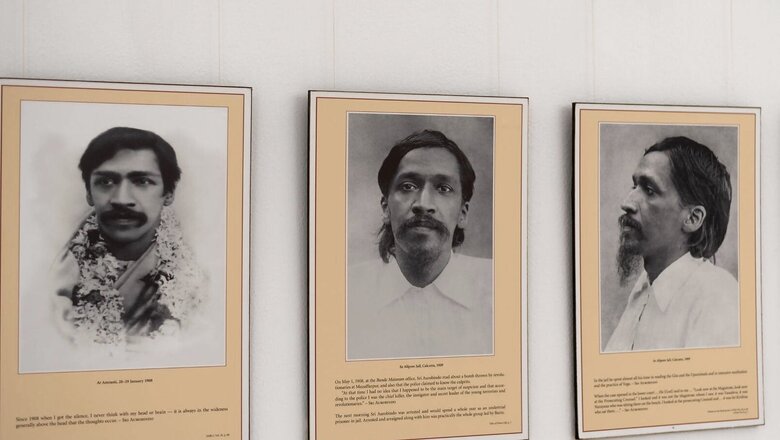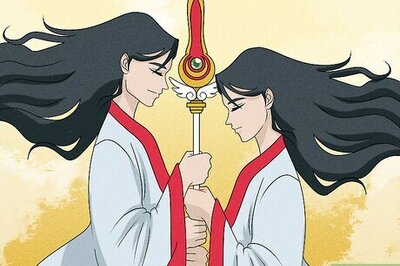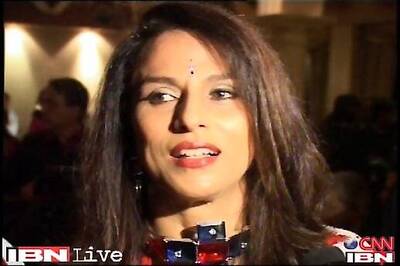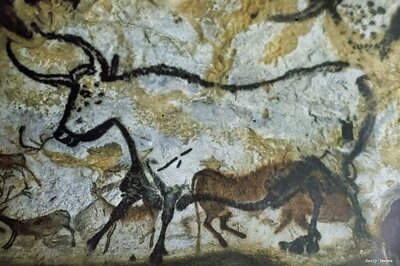
views
It may seem nothing short of remarkable to reconcile such varying inclinations like poetry, politics, and spirituality but great people like Aurobindo Ghosh and Sarojini Devi ji have inspired us by actually doing so. This reconciliation of seemingly diverse abilities into one holistic whole is often the hallmark of brilliant souls.
Sri Aurobindo Ghosh was an Indian Freedom fighter, poet-writer, and spiritualist. One must not understand his complex personality as a bundle of contradictions but as a harmonious whole encompassing the extraordinary qualities of a poet, a political thinker, an idealist, as well as a spiritual being.
Sri Aurobindo Ghosh was born in Kolkata in India on the 15th of August, 1872. His parents were Swarnalata Devi and Krishna Dhun Ghosh. He spent his early boyhood in England. He used to speak the English language as if it was his mother tongue. He began writing poems at a young age. A great soul has once said, ‘He must be a true artist in those formative years, which precedes his ultimate message to mankind; unless his medium has already been made sufficiently musical and imaginative, he can never in his hour of maturity reveal in an authentic poetic accent, an aspect of ‘divine philosophy’.
Sri Aurobindo was a natural poet and all poets have the element of the divine in them. In other words, poets have a certain degree of spiritual spirit embedded in them. They also have tremendous foresight and vision. In addition, it is to be noted that Aurobindo Ghosh had acquired his entire education in England. One can clearly note the influences of English Literature, Greek and Latin Literature on young Aurobindo’s poetry.
One can observe multiple cultural influences on young Aurobindo. The same had happened with Sarojini Devi. She too had obtained a certain extent of her formal education in England but thankfully that was after she had studied for a decent length of time in India. Thus, the fundamentals of her education were laid in India.
STAGE I: AUROBINDO AS A POET
Let us note the early poetic style of Aurobindo, which is influenced to a great extent by Greek literature. In the following lines, the poet Aurobindo writes about the lover in the midst of his lament by the banks of the Arethuse river for the cruel manner in which Nisa has forsaken him for Morpsus and who longs for death.
‘O plaintive murmuring reed, breathe yet thy strain.
Ye glades, your bliss I grudge you not,
Nor would I that my grief profane,
Your sacred summer with intruding thought.’
(from ‘Songs to Myrtilla’, written under the influence of the Greek Muse)
(One can clearly note the influence of European thought, culture, emotions and literature upon young Aurobindo Ghosh. After spending many years in England, he returned to India where he began to understand Indian culture and its deep spirituality).
The aesthetic quality of his poetry reached a peak in lines like the following ones.
‘The world was water
and the skies to water plunged…
All night with a dim motion gliding down,
He felt the dark against his eyelids.’
(‘Love and Death’)
Aurobindo blended the poetic techniques of Milton, Shelley and Coleridge and he was at once Virgil and Dante. The quality of the aesthetics of his poetry is supreme. He is often compared to Bharatiya poet and playwright extraordinaire, Kalidasa, the Great. I also accidentally discovered sweet delicacies in his poetry like the following lines.
‘Bridal outpourings of her broken name.
All these as rush unintermitting waves,
Upon a swimmer overborne, broke on him,
Relentless, things too happy to be endured….’
(‘Love and Death’)
BAJI PRABHOU
‘Baji Prabhou’ is one of the greatest patriotic poems of Bharat. This was authored by none other than Thiru. Aurobindo Ghosh. The poem is founded on the historical incident of the great sacrifice by Baji Prabhou Despande who covered Sivaji’s retreat by holding the fort of Rangana for over two hours with a small company of men against 12,000 Mughals. The poet uses the Heroic Blank Verse and the imagery/description is absolutely stunning. This is the Indian story of David vs Goliath.
‘At last, they reached a tiger-throated gorge,
Upon the way to Raigarh narrowing there
The hills draw close and their forbidding cliffs,
Threaten the prone incline.’
‘Not for this little purpose was there need,
To call the Prabhou from his toil. Enough,
Give me Five Hundred men; I hold the pass,
Till thy return.’
‘Over the stumbling edge and down the rise,
And once again the desperate moment parted.
The relics of the murderous strife remained,
Corpses and broidery and gold.
But not for this would they accept defeat.
Once more they came and almost held!’
Many scholars consider ‘Baji Prabhou’ as Sri Aurobindo Ghosh’s greatest contribution to the patriotic literature of his country.
One can observe the spiritual evolution of Sri.Aurobindo as a poet and a spiritualist. It has been a long way from ‘Songs to Myrtilla’ to ‘Baji Prabhou’. It was an evocative evolution for Aurobindo from his ‘Songs to Myrtilla’ inspired by Greek philosophy to ‘Baji Prabhou’ inspired by Indian history.
Let’s look at Manu and observe the transition in style of poetry:
‘Rishi who trance held on the mountain old
Art slumbering void,
Of sense of motion for in the spirits’ hold,
Of unalloyed,
Immortal bliss thou dream’st protected! Deep
Let my voice glide.’
Sri Aurobindo wrote lyrical poetry between 1930 and 1950. Sri Aurobindo was a staunch Hindu and brought his religious and spiritual beliefs into his poetry. Thiru. Aurobindo’s Gigantic Personality was able to assimilate and resolve all aspects of his multifarious activities and beliefs into one holistic whole.
Let us read his poem ‘Shiva’:
‘A face on the cold dire mountain peaks,
Grand and still; its lines white and austere,
Match with the unmeasured snowy streaks,
Cutting heaven, implacable and sheer.’
‘Above it, a mountain of matted hair,
Aeon-coiled on that deathless and lone head,
In its solitude huge of lifeless are,
Round, above illimitably spread!’
There is another poem, ‘Jivanmukta’, which combines the splendour of poetic imagery with sublime spirituality.
‘A power descends no fate can perturb or vanquish,
Calmer than mountains, under then marching water,
A single might of luminous quiet,
Tirelessly bearing the worlds and anger.’
There are mystic poems like Krishna in his collection of lyrical poems. Another superb example is ‘The Cosmic Dance’ {Dance of Krishna, dance of Kali}. The following are an excellent example of how poetic excellence and spiritual heights combine.
‘Two measures are there of the cosmic dance,
Always we heard the tread of Kali’s feet,
Measuring in rhythms of pair and grief and chance,
Life’s game of hazard terrible and sweet.’
The above is written in the Sonnet form.
‘Revelation’, ‘Transformation’, ‘Ruru of God’, ‘Trance of Waiting’, ‘The Tiger and the Deer’, ‘Dream of Surreal Science’ are among his more popular poems.
Sri Aurobindo, Sarojini Naidu, and Manmohan Ghosh were among those poets who had spent some impressionable years of their life in England, and the diversity of their multi-cultural influences reflected in their poetry.
Any poet worth his name is sure to be aware of Sri Aurobindo’s writings. Some of the time revered works of Thiru. Aurobindo includes, ‘The Life Divine’, ‘Essays on the Gita’, ‘The Synthesis of Yoga’, ‘The Human Cycle’, ‘The Ideal of Human Unity’, and ‘Savitri’.
His earlier poems are sensuous in nature; be it ‘Songs to Myrtilla’ or ‘Night by the Sea.’ The poet -spiritualist gradually moves to a greater degree of spirituality. Sri. Aurobindo spent his early childhood in Britain. Initially, like Sarojini Naidu, who also spent some time in Britain, he used to be inspired more from Greek and English references. Aurobindo started to derive greater inspiration from ‘The Indian Soil and Myth’ rather than ‘Sicilian Olive Groves’ or ‘Parnassus’ with the passage of time as he gradually acclimatised to the Indian land, languages, people, culture, religion, mythology, and spirituality.
His Magnum Opus was ‘Savitri’. According to Sri Aurobindo, ‘The Thinking of Being is the Fundamental Manner of Poetizing. Aurobindo’s poetry is the quest after the life divine. According to Sri Aurobindo, ‘Future Poetry will be more and more approximate to the mantra.’
Sri Aurobindo was India’s Milton. Sri Aurobindo used epic similes, proper names, inversions, and involved construction.
Sri Aurobindo was greatly influenced by the 4 plans, which are said to be between the Mental Mind and the Highest Consciousness, the Higher Mind, Illumined Mind, Intuitive Mind and the Over-mind. ‘Savitri’ is the finest flower of ‘over-mind’ poetry.
SAVITRI
‘Savitri’ is an epic, which was completed in fifty years. It reminds one of Milton’s ‘Paradise Lost’. The use of blank verse, similes and seriousness reminds one of the bewitchingly beautiful poetic craft of Thiru. Aurobindo.
According to Thiru. Aurobindo himself – ‘Savitri is an experiment in mystic poetry, spiritual poetry cast into a symbolic figure.’
Savitri is a poem in 12 books and 14 cantos. The poet has a variety of styles – dramatic, neo-classical, romantic and narrative, etc.
Aurobindo contributed to Meta poetics, Future Poetry, ‘the Poetics of the Modern era’. According to Sri Aurobindo, ‘The function of Poetry is neither to teach Truth nor to pursue Knowledge nor to serve any ethical purpose but to have a life of its own to embody beauty and give delight. Essentially, the poet explains that the purpose of poetry is to give an intense impression of beauty and to give delight to the soul of existence. One must get out in the pursuit of ‘The Life Divine’, ‘The Supreme Reality’, and man’s own divine possibilities.
Thus, the first stage of Sri Aurobindo’s life was devoted to writing poetry. The second stage of his life was that of Political Activism.
STAGE II: POLITICAL ACTIVISM
Sri Aurobindo was a hardcore nationalist. He was also one who believed in revolution as a means to free India. Undoubtedly, he believed in violence as the means to get freedom for India from the British imperialists. He subscribed to violence as a policy for political freedom for India. However, this terrible strain of thought lasted only for 4 years between 1906 and 1910. After the Alipore Bomb Case, Sri Aurobindo was acquitted and went away to settle in Pondicherry in 1910.
The Alipore conspiracy case is occasionally referred to as the Maniktala bomb conspiracy or the Murarupukur conspiracy. In 1908, an attempt was made to murder Douglas Kingsford, a British chief Magistrate. This was undertaken by Prafulla Chaki and Khudiram Bose. The Anusilan Samiti, a group of revolutionaries against the British Raj existed in Kolkata during the initial thirty years of the 20th century. 38 Indian nationalists including Aurobindo Ghosh who all were members of the Anusilan Samiti were accused of leading the Alipore Conspiracy Case. The members advocated militant nationalism against repression.
The Alipore Bomb Case is considered to be the first state trial of any magnitude in India. The British Government arrested Sri Aurobindo, who was a staunch nationalist and Hindu along with Barindra Kumar Ghosh (elder brother of Aurobindo Ghosh), and many young revolutionaries. They were charged with “Conspiracy” or “waging war against the King” — the equivalent of high treason and punishable with death by hanging. ‘The case dragged on with preliminary hearings in the Magistrate’s court, involving 1000 artefacts as evidence and 222 witnesses followed by a trial in Sessions Court, involving 1438 exhibits and 206 witnesses. During this period, the under-trial prisoners were illegally held in Presidency Jail under torturous conditions (including solitary confinement)’.
The judgement was delivered by Judge Beachcroft on 6 May 1909 after a delayed trial of one year. Sri Aurobindo was acquitted of all charges. The Judge condemned the flimsy nature of the evidence against him. Of the thirty-seven prisoners on trial, Barindra Ghose as the head of the secret society of revolutionaries, and Ullaskar Dutt, as the maker of bombs, were given the death penalty (later commuted to transportation for life), seventeen others were given varying terms of imprisonment or transportation and the rest were acquitted.
Deshbandhu Chittaranjan Das has described Thiru. Aurobindo as ‘the poet of Patriotism’ in the course of his concluding argument in defence of the poet during the trial of the Alipore Conspiracy case.
It was in ‘Bande Mataram’ that for the first time, India heard the electrifying lines by Aurobindo demanding complete and undiluted freedom. Sri Aurobindo was able to articulate his view on Complete Independence, very well. He explained the legitimacy and necessity of complete independence. He based his claim for freedom for India on the inherent right to freedom and not on any charge of misgovernment or oppression. He wrote – ‘Political freedom is the life-breath of a nation; to attempt social reform, educational reform, industrial expansion, the moral improvement of the race without aiming first and foremost at political freedom is the very height of ignorance and futility. Such attempts are foredoomed to disappointment and failure; yet when the disappointment and failure come, we choose to attribute them to some radical defect in the national character, as if the nation were at fault and not its wise men who would not or could not understand the first elementary conditions of success. The primary requisite for national progress, national reform is the free habit of free and healthy national thought and action which is impossible in a state of servitude. The second is the organization of the national will in a strong central authority.’
At the time when Aurobindo lived in London, he joined up with a society of revolutionaries called “Lotus and Dagger” who were committed to overthrowing the British. After his return to India, he started working to bring about a revolutionary change in the political situation in India.
He came to believe that Bharat needed to embark upon a total revolution.
In political thinking, Sri. Aurobindo was an extremist like Bal Gangadhar Tilak and Bipin Chandra Pal. The group of extremist nationalists was of those who were quite unlike the moderates in that they were willing to use violence as a means to succeed. Bipin Chandra Pal had founded the nationalist Bengali newspaper Bande Mataram. Pal invited Aurobindo to become its editor along with Pal. Of Bande Mataram, Pal writes, ‘The hand of the master was in it, from the very beginning. Its bold attitude, its vigorous thinking, its clear ideas, its chaste and powerful diction, its scorching sarcasm and refined witticism, were unsurpassed by any journal in the country, either Indian or Anglo-Indian. It at once raised the tone of every Bengali paper, and compelled the admiration of even hostile Anglo-Indian editors. Morning after morning, not only in Calcutta but the educated community almost in every part of the country, eagerly awaited its vigorous pronouncements on the stirring questions of the day…It was a force in the country which none dared to ignore, however much they might fear and hate it, and Aravinda was the leading spirit, the central figure, in the new journal…’
Sri Aurobindo and Shyama Prasad Mukherjee
According to The Mother of Pondicherry, ‘If anyone understood one-fourth of Sri Aurobindo, it was Shyama Prasad.’ Shyama Prasad Mukherjee was the founder of the Bharatiya Jana Sangh – the predecessor to today’s Bharatiya Janata Party.
Views of Aurobindo on national education
His time at the Baroda university convinced him about the shortcomings of the education system of the time. His views on national education frequently brought him in conflict with the moderates of the Congress Party. Aurobindo along with others saw the Risley Circular as a direct attack on the Youth Nationalism of India. The Risley Circular banned the study or mention of politics from government-aided educational institutes, He campaigned extensively to gain self-reliance on the front of education, writing articles about the circular and its implications. He, along with Rabindranath Tagore, Raja Subodh Chandra Mullick, and Brajendra Kishore Roychowdhury decided that they would protest the partition of Bengal (1905) by setting up an institution that would challenge British rule by offering education to the masses “on national lines and under national control”. The Bengal National College was set up with Aurobindo as its first principal. Sri Aurobindo was also the founder of the newspaper ‘Karmayogin’. He expounded in detail his philosophy on education in the series titled A System of National Education.
STAGE III: AUROBINDO AS A SPIRITUALIST
Sri Aurobindo Ghosh was a powerful seer, too. The Crux of the Spiritual Process given by him is as follows.
The triple transformation
Sri Aurobindo, the Indian seer describes three successive phases of personal transformation — the Psychic, the Spiritual, and the Supramental.
In the first phase of the Triple Transformation, one moves from the outer surface consciousness to the inner consciousness; the inner mind, the subliminal within, until one reaches the personal soul, the inner psychic consciousness. At the psychic one has withdrawn from the ego consciousness, one is able to understand and control the limitations of one’s physical, vital, and mental being, and one is put in touch with the cosmic, universal forces and truths. This is the psychic transformation.
At a further phase, one rises higher in one’s being toward higher planes of mind, including Higher Mind, Illumined Mind, and Intuitive Mind. It is an opening to the presence above, an elevation of one’s lower consciousness to the higher, and the descent of the higher into the lower. This is the Spiritual transformation, beyond the Psychic transformation. Beyond that still is the Supramental transformation, where one rises to the level of Supermind, for a radical transformation of the being out of the ignorance that is the foundation of our nature, and into a new functioning that transcends beyond the mental, vital, and physical. One can become the Supramental being. The Triple Transformation are these three types that would happen in succession.
When one opens to the Supramental Consciousness, the Force, one lives, experiences all its benefits. It can transform the nature, enable falsehoods to evaporate, create knowledge where there is ignorance, sets problems right, gives the full truth and knowledge, reveals solutions that create unity for multiple parties simultaneously, enables infinite possibilities, possibilities that can transcend space and time, etc.
The above has been extracted from a number of Sri Aurobindo’s works, including ‘The Life Divine, as well as from The Mother’s experiences as indicated in Mother’s Agenda.
In ‘Pondicherry Dernier Refuge’, Sri. Suresh Chakravarthy echoes a feeling and a thought of millions when he explains through his own life story of how Pondicherry became his ‘dernier’ (French word) or last refuge. Pondicherry remains a last hope for many spirituality and peace seekers from all over the world belonging to diverse backgrounds.
AUROBINDO ASHRAM
The Sri Aurobindo Ashram is a spiritual community or Ashram located in Puducherry, a union territory in India, which was under French Imperialist rule prior to India’s independence. The ashram started as a small community of disciples who had gathered around Aurobindo after he retired from politics and settled in Pondicherry in 1910. He was in politics only for a certain period of time. He had practised yoga and other spiritual activities side by side with his public activities. In 1910, he settled once and for all in Tamil land in Pondicherry. He wanted to be free from the political pulls and ‘to perfect an integral method of spiritual akinesis by which those supramental ranges of consciousness of which the seers of the Upanishads had spoken would have rendered accessible to the waking state’. Thus, Sri. Aurobindo found peace in Tamil Land.
Sri Aurobindo withdrew from public view in order to continue his spiritual work on 24 November 1926, after a major spiritual realisation. At that moment, he handed over the full responsibility for lives of the spiritual seekers and the ashram to his spiritual collaborator, “The Mother”, earlier known as Mirra Alfassa. 24th November 1926 is considered to be the founding day of the Aurobindo Ashram.
Thus, the life of Sri Aurobindo has been a continuous search and transformation — from poet to politics to spirituality!
References:
1. Sri. Aurobindo The Poet. K.D. Sethna. Sri. Aurobindo International Centre for Education, Pondicherry. 1970
2. Pondicherry, dernier refuge. Suresh Chakravarthy. Sri. Aurobindo Ashram. Pondicherry. 2009
3. Sonnets. Sri. Aurobindo. Sri. Aurobindo Ashram Publication. Pondicherry. 2002
4. Sarojini Naidu. Dr.R.L. Varshney. Lakshmi Narain Agarwal Educational Publishers. Agra.
5. The Golden Treasury of Indo-Anglian Poetry. Vinayak Krishna Gokak. Sahitya Akademi. New Delhi. 1970
6. English Poetry in India. Pronab Kumar Majumder. Bridge-in-Making Publication. Kolkata. 2015
Dr S Padmapriya is a poet, scholar, and educator. The views expressed in this article are those of the author and do not represent the stand of this publication.
Read the Latest News and Breaking News here


















Comments
0 comment